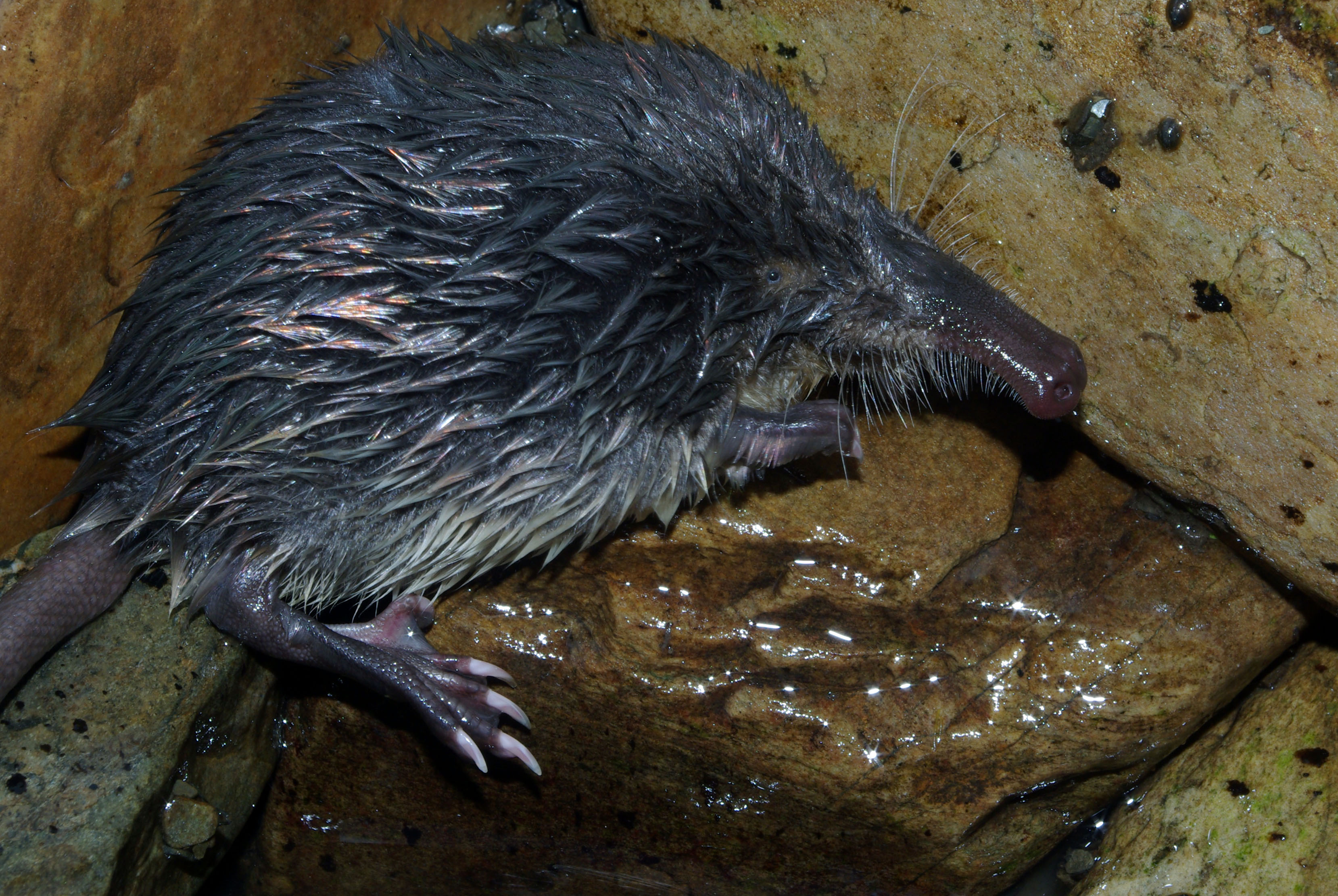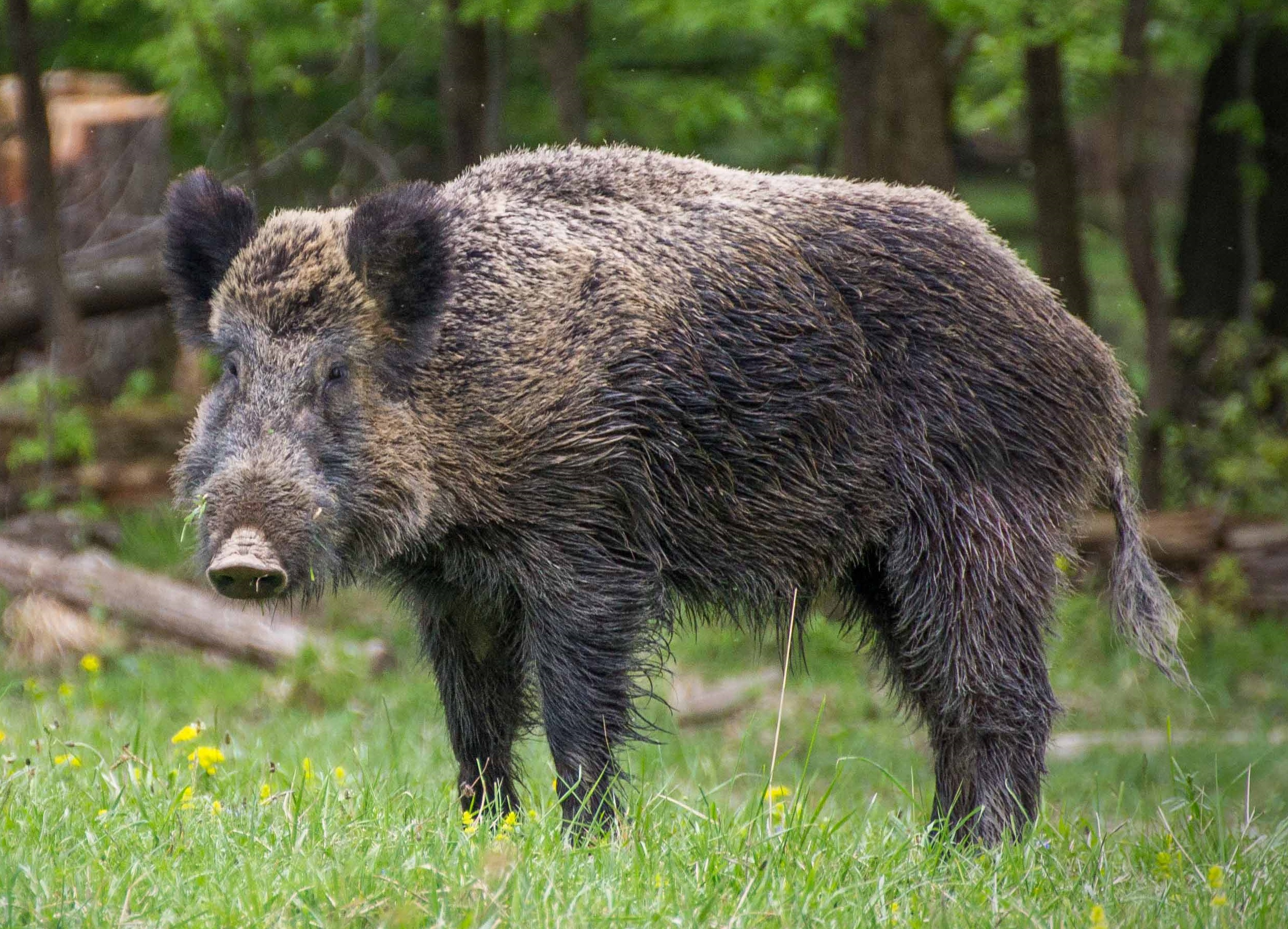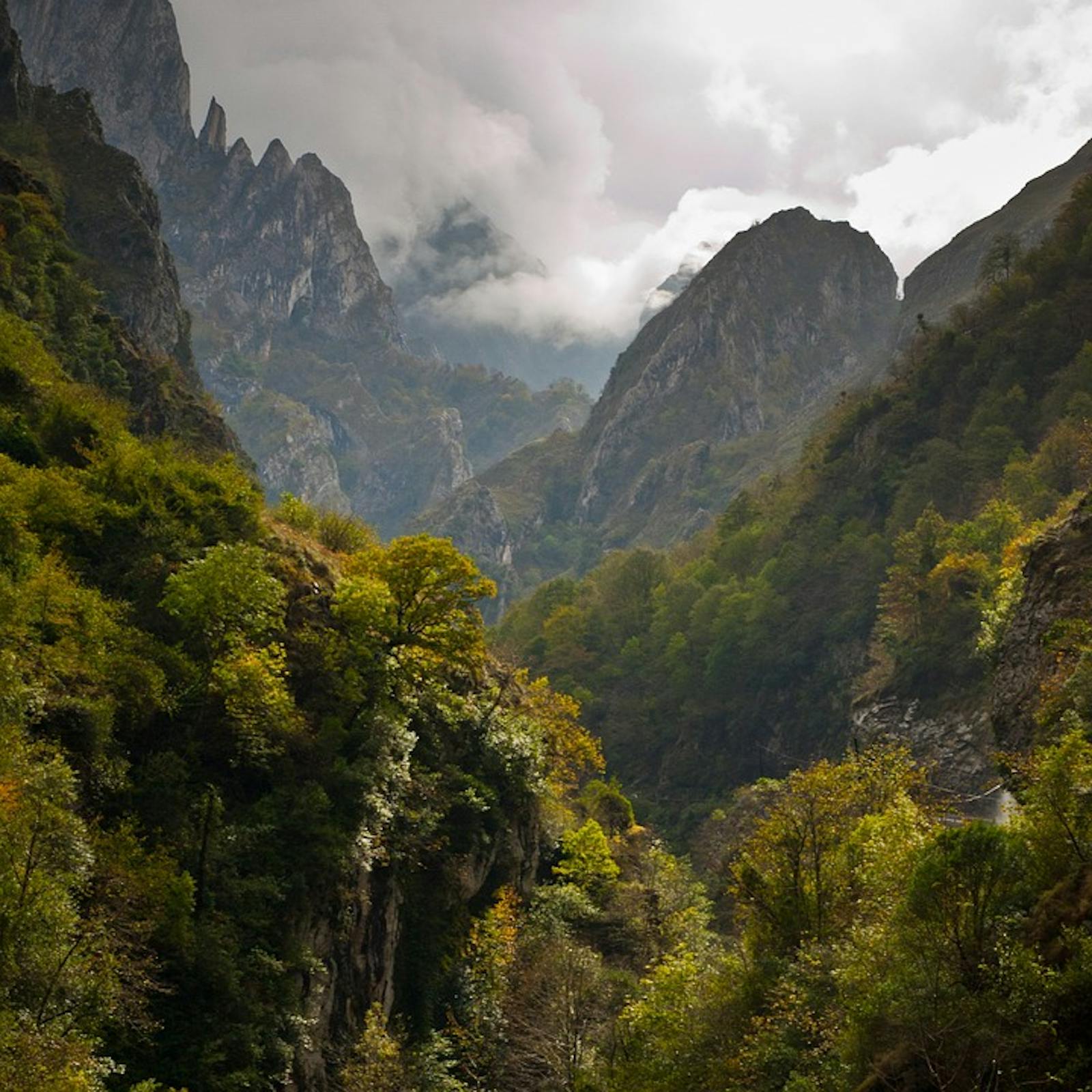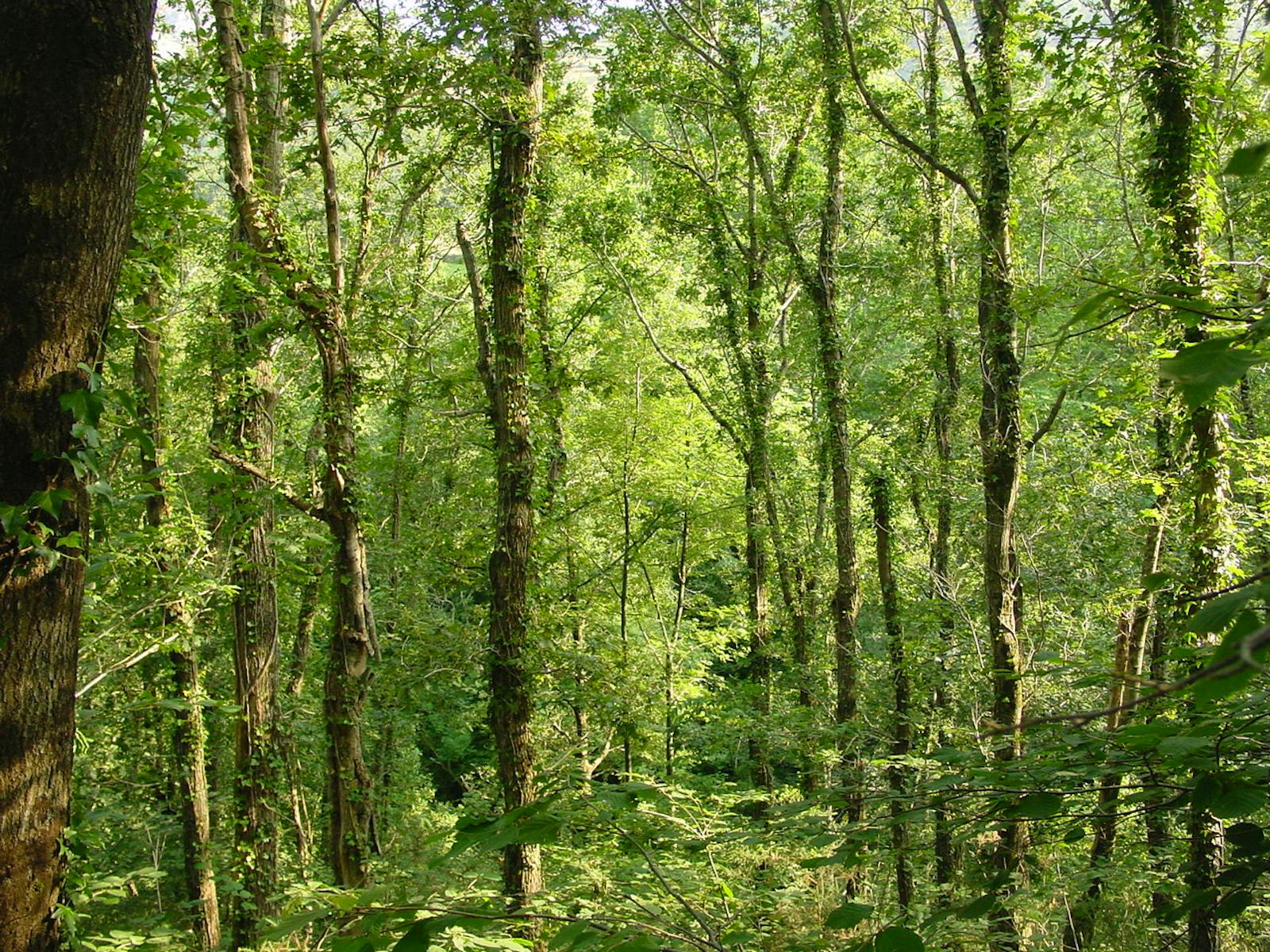Cantabrian Mixed Forests
The ecoregion’s land area is provided in units of 1,000 hectares. The conservation target is the Global Safety Net (GSN1) area for the given ecoregion. The protection level indicates the percentage of the GSN goal that is currently protected on a scale of 0-10. N/A means data is not available at this time.
Bioregion: West European Coastal Mixed Forests (PA10)
Realm: Western Eurasia
Ecoregion Size (1000 ha):
9,631
Ecoregion ID:
648
Conservation Target:
43%
Protection Level:
6
States: Spain, France, Portugal
Evergreen oak woods, the spectacular pinnacles of the Picos de Europa and the coastal wetlands of the Arcachon Basin: the Calabrian Mixed Forests ecoregion has a diverse array of habitats. Forests of oak and beech predominate and montane heaths are bright with heathers. The area provides a haven for the endemic broom hare, the critically endangered European mink, Pyrenean desman, brown bear, wolves, wild boar, chamois, and the rare Cantabrian capercaillie. Lagoons and mudflats are vital for wading birds.

The flagship species of the Cantabrian Mixed Forests ecoregion is the Pyrenean desman. Image credit: Creative Commons
Tracking the Atlantic coast from the northern half of Portugal, across northern Spain to La Rochelle in France, this ecoregion encompasses the smooth igneous rock elevations of the Galician Massif, the limestone pinnacles and canyons of the Cantabrian Mountains, and the forests, wetlands, and coastal lagoons of Gironde and Landes. The climate is warm Atlantic in nature with average monthly temperatures of 6-20°C and about 1,100 mm annual rainfall. Galicia is more Mediterranean in nature with warmer, drier summers whilst the higher mountain elevations of the Cantabrian “Picos de Europa” experience cold winters with heavy snowfall.
Along the Cantabrian coast, patches of evergreen oak forest cling to limestone outcrops and mountain canyons protected from the harshest weather. South-facing, low-lying areas have cork oak woods and hay meadows. West-facing (rain exposed) slopes are covered by pedunculate oak forest or low shrubs of St. Dabeoc's heath. On east-facing slopes, Pyrenean and sessile oaks dominate the forest.
Montane heathland, the result of historic forest clearance, is populated by a rich variety of heathers and gorse. St Patrick’s cabbage is a botanical mystery: a member of the Lusitanian floral group found in Iberia and Ireland but nowhere in between. Interior mountains are forested with oak and mixed woodland with an increasing amount of beechwood to the east of the ecoregion.
Aspects exposed to oceanic winds are often bare of trees and covered instead by shrubs, dry heaths, wet heaths and peatland. Between 10-20% of plant species are endemic. Picos de Europa National Park, revered by climbers but feared for its rolling banks of fog, is home to over 50 orchid species.
The far-southwestern range of the brown bear, the ecoregion also supports critically endangered European mink, the Pyrenean desman, wolves, wild boar, chamois, deer, and wild horses. The Ancares-Courel special protection area homes the endemic broom hare.
The ecoregion is also important for birds, including the endangered Egyptian vultures and Cantabrian capercaillie, as well as turtle doves and a variety of raptors. Coastal lagoons and mudflats are vital for a host of wading birds and utilized by loggerhead, and Kemp’s and leatherback turtles. The golden-striped salamander is endemic and a third of all European butterfly species are present.

Wild boar. Image credit: Valentin Panzirsch, Creative Commons
During Pleistocene glacial events, localized conditions enabled the persistence of frost-sensitive, relict plant species. Human interactions have had a profound effect on the landscape, exemplified by cave and rock art, Roman mining operations, mineral extraction for steel production, historic forest clearance, hunting, and cattle ranching. Over the last 50 years, abandonment of cattle operations has led to natural expansion of mountain forests, but lower areas have been converted to exotic tree plantations.
Invasive species in protected areas are a cause for concern, for example, the silver wattle and needlebush (both natives of Australia) found in Penada Geres National Park. Road construction has caused habitat fragmentation. Air pollution from power stations and forest fires, exacerbated by climate change, are current threats, and coastal areas are heavily developed in some parts of the ecoregion.
The priority conservation actions for the next decade will be to: 1) mitigate the effects of multiple road constructions on habitat fragmentation; 2) continue and expand conservation measures for endangered species; and 3) prevent further range expansion of exotic plant species.
Citations
- WWF. 2018. Cantabrian mixed forests. [Online]. [Accessed 14 July 2019]. Available from: https://www.worldwildlife.org/ecoregions/pa0406
- Joint Research Centre of the European Commission. 2019. The Digital Observatory for Protected Areas (DOPA) Explorer 3.1: Cantabrian mixed forests. [Online]. [Accessed 14 July 2019]. Available from: https://dopa-explorer.jrc.ec.europa.eu/ecoregion/80406
- Sobrino, C., Ramil-Rego, P., Gómez-Orellana, L., Ferreiro da Costa, J. and Díaz Varela, R. 2008. Climatic and human effects on the post-glacial dynamics of Fagus sylvatica L. in NW Iberia. Plant Ecology. 203, pp.317-340. DOI:10.1007/s11258-008-9552-5.


.png?auto=compress%2Cformat&w=300)

